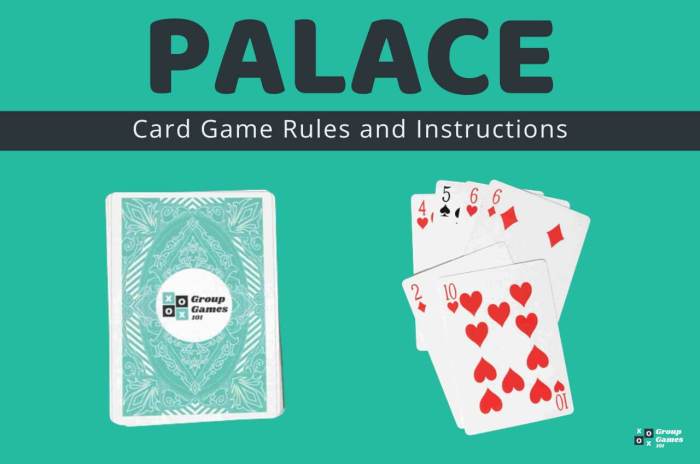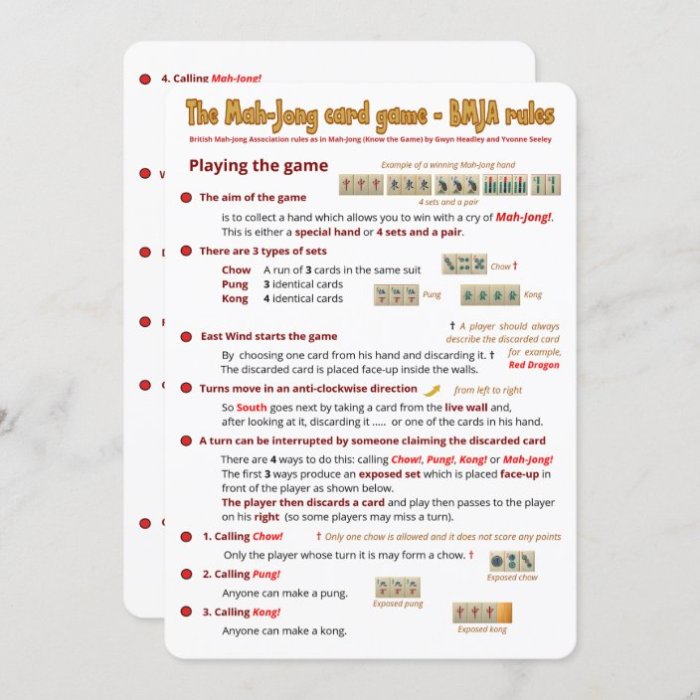
With Card game rules at the forefront, prepare to shuffle your way into a world where strategy meets serendipity! Picture this: a table surrounded by friends, laughter bouncing off walls, and a deck of cards that holds the power to ignite fierce competition or cooperative camaraderie. Whether you’re a seasoned card shark or a newbie trying to navigate through the chaos of rules, this is your ticket to mastering the fine art of card games.
Card game rules are not just a boring list of dos and don’ts; they are the lifeblood of gameplay that can transform a mundane evening into a thrilling adventure. From classic games like Poker and Bridge to quirky indie creations, every game has its own unique flavor and style, influenced by culture, region, and a dash of creativity. Understanding these rules can help you avoid the dreaded fate of being that one player who keeps asking, “Wait, what do I do again?”
Understanding Card Game Rules
Card games have been the life of the party since the dawn of civilization, bringing people together over a shared love of strategy, luck, and the occasional card shark. Understanding the rules is crucial, as they dictate how players interact with one another, strategize, and ultimately, win or lose. Whether you’re bluffing your way through a high-stakes poker game or trying your hand at a casual round of Crazy Eights, knowing the rules is your ticket to both fun and fair play.The essence of card game rules is to establish a clear framework that governs how the game is played.
These principles are crafted to ensure fairness, enhance enjoyment, and minimize confusion. Most card games revolve around a few common concepts: the objective of the game, how cards are dealt, the turn order, permissible actions during play, and how a winner is determined. Variations can arise based on regional preferences, cultural influences, or even individual house rules that add an extra sprinkle of unpredictability to the mix.
Examples of Popular Card Games and Their Rules
There are countless card games, each with its own delightful quirks and rules that keep players on their toes. Here’s a look at some popular games and a brief overview of their specific rules:
- Poker: A game where bluffing is an art form, players try to assemble the best five-card hand using either their own cards or community cards. Key rules include betting rounds, the ranking of poker hands, and the concept of a “fold.”
- Bridge: A partnership game played with a standard deck where players bid to determine how many tricks they can win. The rules emphasize communication and strategy, with players needing to understand their partner’s signals.
- Uno: A colorful card game where players aim to be the first to discard all their cards by matching colors or numbers. Special cards like “Skip” and “Reverse” add a twist, and players must shout “Uno!” when down to one card.
- Rummy: Players aim to form sets or runs of cards. The first player to meld all their cards wins, but beware of the points you accumulate if you don’t; it might just land you in the card game hall of shame!
Variations in Card Game Rules Across Cultures
Card games are like languages, adapting and evolving as they spread across cultures and regions. Here are a few fascinating variations:
- European vs. American Poker: While the essence remains the same, European poker often emphasizes a more formal structure, while American versions tend to embrace a casual atmosphere with more emphasis on social interaction.
- Spanish Mus: This traditional game from Spain has unique rules such as the “mujeres,” where certain cards are designated as powerful, influencing how players strategize their hands.
- Chinese Mahjong: While technically a tile game, many variants incorporate card-like elements. The rules can differ significantly depending on the region, with various scoring systems and game setups.
- Indian Teen Patti: Often called Indian Poker, it features a simpler structure compared to traditional Poker, with players betting on the strength of their three-card hands, usually accompanied by a festive atmosphere.
“Card games are the ultimate test of strategy, luck, and the art of not letting your opponent know you’re bluffing—unless you want to add a sprinkle of chaos to the mix!”
Creating Your Own Card Game Rules
Designing your own card game rules can be as exhilarating as a roller coaster ride and as challenging as finding the last piece of a jigsaw puzzle. With a sprinkle of creativity, a dash of humor, and a pinch of strategic thinking, you can construct the ultimate game that your friends will reference for years to come. So, grab your notepad, channel your inner game designer, and let’s embark on this whimsical journey into the world of card game rule creation!Crafting unique card game rules requires a methodical approach mixed with a bit of flair.
A successful game hinges on a blend of mechanics, player interaction, and, of course, enjoyment. By following a series of steps and keeping key elements in mind, you can transform your ideas into an engaging game that can keep players entertained for hours on end.
Steps to Design Unique Card Game Rules
To create your whimsical card game, you’ll want to follow these essential steps that will take you from concept to creation faster than you can say “shuffle the deck!”
- Define the Theme: Choose a catchy theme that tickles your fancy. Whether it’s a medieval quest or a garden gnome showdown, make it memorable!
- Determine the Objective: Clarify what players need to achieve to win. Is it collecting the most glittering treasures or simply surviving a zombie invasion? Make it clear!
- Establish Game Mechanics: Decide how players will interact with the cards. Will they draw, discard, trade, or sacrifice a rubber chicken? The mechanics are the heart of your game!
- Create Card Types: Design various card types with distinct functions. Think action cards, character cards, and wild cards that could turn the tide of the game!
- Set Up Rules: Write clear and concise rules that explain gameplay, scoring, and any special conditions. Avoid ambiguities or players might start questioning if they can use their pet hamster as a game piece!
Essential Elements to Consider When Crafting Rules
When it comes to creating your game rules, there are a few essential elements that should never be overlooked. A well-constructed rule set is the backbone of any enjoyable gaming experience. Here’s a look at critical points to keep in mind while drafting your rules:
“Clear rules make for happy players; confusing rules make for uninvited glares.”
- Player Count: Specify how many players can join the fun. Does your game work with solo players, or is it a party extravaganza for six?
- Play Time: Offer an estimate of how long a game session will last. Is it a quick 15-minute thrill or a sprawling epic that could last all night?
- Complexity Level: Assess the skill level required for your game. Is it kid-friendly or brain-bending for seasoned strategists?
- Game Balance: Ensure that no player has an overwhelming advantage. Fair play is essential for a game that everyone can enjoy.
- Replayability: Consider how many times players will want to play your game. Is it fresh every time, or does it wear thin faster than a rubber band in a heatwave?
Methods for Playtesting and Refining Your Card Game Rules
The road to a fantastic card game is paved with playtesting. It’s the moment where your game leaps off the page and into the hands of eager participants. Here’s how to effectively test and refine your rules until they shine like a polished trophy:
“Playtesting: where the magic happens and the rules either stand tall or tumble down like a house of cards.”
- Gather a Diverse Group: Invite people from different backgrounds and gaming experiences. Their varied perspectives will help identify potential issues and areas for improvement.
- Observe Gameplay: Watch how players interact with the game. Take notes on their reactions, rules misunderstandings, and epic moments that spark joy—or perhaps mild confusion!
- Solicit Feedback: After the game, ask players for their thoughts. What did they love? What caused any head-scratching moments? Use this feedback to make necessary adjustments.
- Iterate and Revise: Refine your rules based on the feedback collected. Don’t hesitate to tweak mechanics or language until everything flows smoothly.
- Repeat Testing: The best games often go through multiple rounds of playtesting. Like a fine wine, your card game needs time to develop and improve!
Board Games vs. Card Games

In the realm of tabletop gaming, two titans of fun reign supreme: board games and card games. While both deliver doses of joy, strategy, and social interaction, they do so from remarkably different angles. Think of them as the Batman and Robin of the gaming world—each with its own style, flair, and sometimes tendency to steal the show. When it comes to gameplay mechanics, board games are often sprawling landscapes of strategy, requiring players to navigate a physical board adorned with colorful tiles, intricate routes, and sometimes even miniature figurines that could rival a toy store’s inventory.
Card games, on the other hand, usually involve a deck of cards, where players shuffle, draw, and play their way to victory using skillful tactics and often a bit of luck.
Gameplay Mechanics Comparison
Understanding the fundamental differences between the mechanics of board games and card games can enhance your gaming experience. Here’s how they stack up against each other:
- Physicality: Board games often require a designated space and the setup of components like dice, tokens, and boards, while card games can be played virtually anywhere with just a deck of cards in hand, making them the ultimate portable option.
- Complexity: Board games might come with rules that could challenge even the most astute scholar, involving extensive strategies and multiple components. Card games, however, typically have streamlined rules that can be learned in mere minutes, allowing for quick play and easy access.
- Turn Structure: Board games may have players taking turns in sequence, often leading to longer rounds of gameplay. In contrast, many card games have mechanics that allow for simultaneous play, keeping the action fast-paced and engaging.
Influence of Card Game Rules on Experience
Card game rules can significantly shape the overall experience for players, often creating a lively atmosphere that board games might not achieve. Here are some notable impacts of card game rules:
- Dynamic Gameplay: The rules of card games often allow for rapid changes in strategy from one round to the next, creating an exciting environment where players must adapt quickly, much like a chameleon on a disco floor.
- Player Interaction: Card games frequently encourage direct player interaction, whether through trading cards or strategic plays that can thwart opponents’ plans, creating a sense of camaraderie—or sometimes rivalry—that heightens the experience.
- Accessibility: Simplified rules mean that card games can often accommodate a wider range of players, from novices to seasoned veterans, making it a go-to choice for gatherings where not everyone may be a gaming guru.
Trends in Popularity
Recent years have witnessed a noteworthy surge in the popularity of card games over traditional board games. This shift can be attributed to several key factors:
- Digital Adaptations: Many classic card games have found their way into mobile apps and online platforms, allowing players to enjoy their favorites from anywhere, thus driving up interest and accessibility.
- Social Media Influence: The rise of social media has allowed players to easily share their experiences, strategies, and victories in card games, fostering communities that thrive on connection and competition.
- Trend of Quick Play: With increasingly busy lifestyles, many players gravitate towards card games that offer shorter playtimes, allowing for quick sessions that fit into tight schedules, making them more appealing.
“In the grand scheme of gaming, card games might just be the snack-sized treats, while board games are the full-course meals—both delicious in their own right!”
Last Word

As we shuffle our way to the end of this card-filled journey, remember that understanding Card game rules is just the beginning. It’s an invitation to unleash your inner game designer and perhaps create the next big hit at your next gathering! So grab your cards, gather your friends, and let the games begin—may the best strategist win, and may your blunders be few and far between!
FAQs
What are the basic components of a card game?
Typically, a card game includes a deck of cards, players, a set of rules, and sometimes special tokens or scorekeeping materials.
Can I create my own card game rules?
Absolutely! Creating your own rules can be a fun way to personalize the game to suit your tastes and the dynamics of your group.
What is the difference between a card game and a board game?
Card games primarily use a deck of cards for gameplay, while board games usually involve a board, pieces, and often more complex structures and mechanics.
How do card game rules vary by culture?
Different cultures often have unique variations of card games, incorporating local traditions, preferences, and even specific card designs.
What should I consider when designing card game rules?
Think about gameplay mechanics, player interaction, balance, and how to keep the game engaging and fun for all players.
/how-to-play-uno-4169919-hero-2c26a4843b9d4d908e760df80687e445.jpg?w=700)




